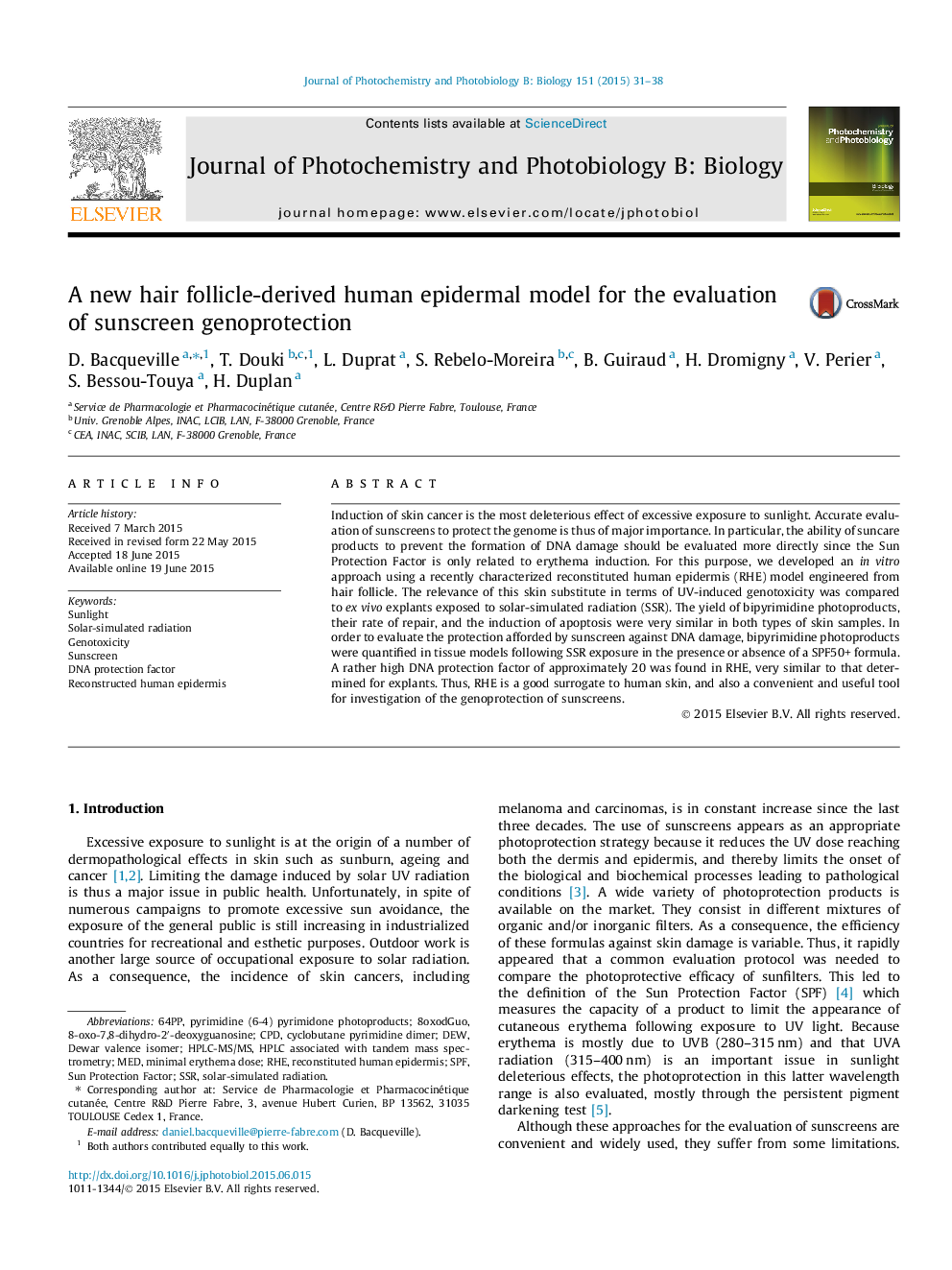| Article ID | Journal | Published Year | Pages | File Type |
|---|---|---|---|---|
| 30212 | Journal of Photochemistry and Photobiology B: Biology | 2015 | 8 Pages |
•Yield of SSR-induced cyclobutane dimers is identical in RHE and skin explants.•DNA repair is similar in RHE and skin.•Apoptosis takes place in RHE like in skin.•RHE is a suitable model for the genotoxic insult to skin cells.•RHE is a convenient and reliable tool for the evaluation of sunscreen.
Induction of skin cancer is the most deleterious effect of excessive exposure to sunlight. Accurate evaluation of sunscreens to protect the genome is thus of major importance. In particular, the ability of suncare products to prevent the formation of DNA damage should be evaluated more directly since the Sun Protection Factor is only related to erythema induction. For this purpose, we developed an in vitro approach using a recently characterized reconstituted human epidermis (RHE) model engineered from hair follicle. The relevance of this skin substitute in terms of UV-induced genotoxicity was compared to ex vivo explants exposed to solar-simulated radiation (SSR). The yield of bipyrimidine photoproducts, their rate of repair, and the induction of apoptosis were very similar in both types of skin samples. In order to evaluate the protection afforded by sunscreen against DNA damage, bipyrimidine photoproducts were quantified in tissue models following SSR exposure in the presence or absence of a SPF50+ formula. A rather high DNA protection factor of approximately 20 was found in RHE, very similar to that determined for explants. Thus, RHE is a good surrogate to human skin, and also a convenient and useful tool for investigation of the genoprotection of sunscreens.
Graphical abstractFigure optionsDownload full-size imageDownload as PowerPoint slide
